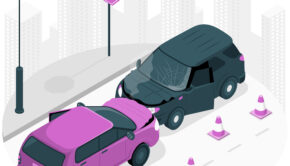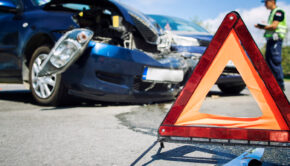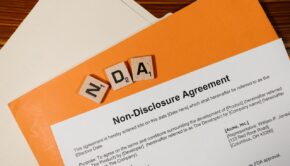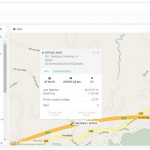How Technology Can Make or Break Your Accident Case
The amalgamation of modern algorithms, sensors, hardware, processing power, and software is constructing a world where every facet of an accident may be recorded, preserved, and discoverable. Modern daily life is subsumed in technological innovations. Cars are equipped with sensors that measure velocity, distance traveled, maintenance records, and more. Streets are increasingly recorded by traffic and security cameras. Local governments rely on “smart” algorithms to sort and categorize all the footage. Mobile phones track movement to within a few feet using GPS satellites.
Technology: Distracted Driving, Evidence, and Data
The role technology has played in car collisions is mixed. The proliferation of mobile technology (especially phones) and Internet-enabled automobiles has dramatically increased the devices demanding a driver’s attention. Accordingly, technology has contributed to an increase in car accidents caused by distracted driving.
Mobile Phones
Technology is also becoming instrumental in proving fault. Litigants serve discovery requests seeking mobile phone and call data. For example, mobile phones record whether it was in use, whether hands-free driving was enabled, or if earbuds were in use. Mobile phones can also help substantiate whether the driver was using an app, texting, or speaking on the phone. The sensors, applications, and data on mobile phones can contextualize what actions the driver took before the collision.
The utility of mobile phones doesn’t end at determining whether a driver was distracted. Mobile phones are equipped with more hardware, processing power, and software than the Apollo capsule. Mobile phones are cameras. For example, if a car is involved in a hit and run – either against another vehicle, pedestrian, or cyclist – the victim or bystanders likely took a photograph of the responsible party. In prior decades, the driver likely wouldn’t ever be identified, but the proliferation of camera phones ensures that nearly every moment of a potential tragedy is recorded. Mobile phones are audio and video recorders. Bystanders to car accident injuries likely recorded the accident’s immediate aftermath, which provides poignant video and audio evidence of the party’s injuries in real-time.
Automobiles
Many modern cars are equipped with “black boxes” similar to the ones stored on planes. The car’s black box records speed, direction, turning speed, braking force, and other data points that allow experts to reconstruct what the car was doing immediately before the accident. Moreover, these black boxes record more information with every model. Future black boxes may incorporate LIDAR and visual sensory information in vehicles equipped with driver-assisted services.
Driver-assisted technology using a combination of LIDAR, visual sensors, and others to assist drivers with parking, braking, maintaining lane, and other services. These technologies may someday, if not already, provide comprehensive information of precisely where a vehicle is struck and how that affected the occupant’s car accident injuries.
Surveillance
In addition to bystanders recording accidents, many American towns and cities are becoming ensconced with increasingly sophisticated security and traffic cameras. The proliferation of new companies, such as Ring, join existing security companies like Brinks and ADT, and public safety programs ensure that many aspects of modern life are recorded in some way by some company, family, or government agency. These cameras are a significant source of evidence to substantiate witness statements and testimony. These new technologies are also paired with sophisticated facial and pattern recognition algorithms to identify people and cars.
Technology as the Cause of an Accident and Products Liability
Like cars, phones, and other devices become “smarter,” the risks and liabilities for this software and manufacturers are significantly exposed. Car manufacturers and suppliers are liable if, for example, a car is designed poorly. Notable examples include Toyota cars that randomly accelerated due to a software design issue. The accelerating Toyota recall cost the company billions of dollars in liability and repair costs. Another famous example was the Firestone tires which exploded, causing serious accidents.
Both of these problems, while significant, were also limited to the manufacturer or supplier itself. However, modern cars incorporate Apple, Google, Microsoft, Samsung, and numerous other technology companies to provide applications, driving directions, and hands-free communication. Incorporating multiple providers into a single product introduces opportunities for people who are injured when these services fail.
Under strict product liability law, a plaintiff can sue every company responsible for bringing a defective product to market. Under strict product liability, the injured party need only prove (1) the product was defective at the time of purchase, (2) that the defendant companies either manufactured, distributed, or sold the defective product, and (3) that the person suffered an injury that was caused by the defective product. If these basic elements are established, the plaintiff can sue every company involved in the manufacture, distribution, and sale of the product.
As it relates to cars, plaintiffs may bring actions against the manufacturer, parts, and service provider, such as Apple, distributor, and retailer (such as the car dealership). The plaintiff can sue these companies collect, and the burden is on the defendants to prove that it wasn’t responsible for the defective product.
The risk of product liability suits and car accidents is significantly expanded because every time a car receives a software update, it is possible that a key operational or safety function may become compromised. Every year consumer news is dominated for a few weeks by a recent Apple or Google update that broke a commonly used feature or compromised privacy or security. On phones, these updates snafus are irritating, but in cars, they can be deadly.
















